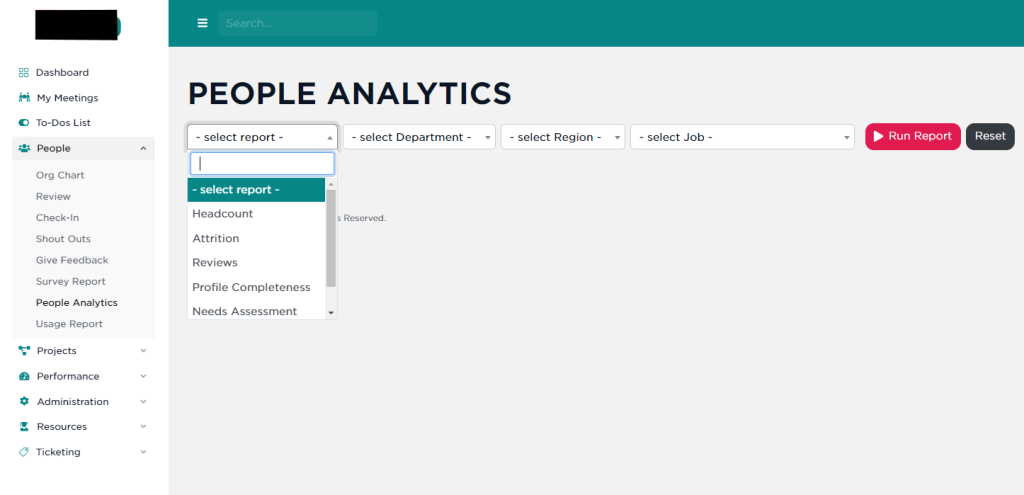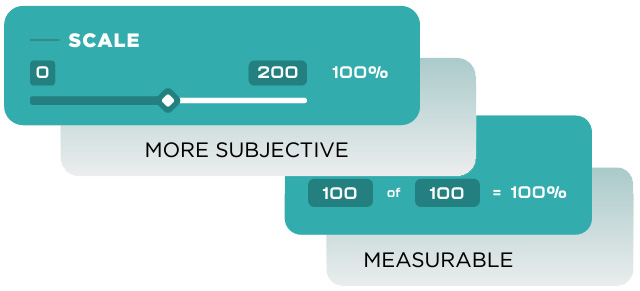We get it. No one really enjoys tough conversations – okay, maybe some people do, but many would rather avoid them at all costs. That may be a non-issue when you don’t absolutely love the food you ordered, but in the workplace, avoiding hard conversations can put you at a major disadvantage. The good news is that critical conversations don’t have to be difficult with a little practice around courageous candor. In today’s workplace, there is a fine line between critique and candor. Organizations that create a brave space for courageous candor develop a culture of trust, teamwork, and innovation, which is essential for continued growth.
In today’s workplace, there is a fine line between critique and candor. Organizations that create a brave space for courageous candor develop a culture of trust, teamwork, and innovation, which is essential for continued growth.
Think Like A Detective
Stay open-minded by taking the approach of “investigate rather than assume”. When you are able to shift your mindset, you may uncover valuable information you otherwise might have overlooked.
Set The Stage
Frequent manager-employee touch points create an environment for critical conversations to happen more naturally. Regular one-on-one meetings (we prefer weekly) where candor and feedback are welcome can help alleviate some of the pressure around critical conversations.
Collaboration Is The Goal
Critical conversations are a chance to connect with your employee. The goal is to understand what has led to where you are and then develop a plan to move forward together.
Let’s Get Started
At the end of the day, we know critical feedback matters. Without it, we won’t be making progress.
When managers see a gap between where employees are and where they aspire to be, it’s our responsibility to close that gap. We do our team members a disservice when we aren’t willing to have a conversation that matters – even when it makes us uncomfortable to do so.
When you put off courageous candor in the workplace, you risk:
- Lost revenue
- Impacting engagement
- Attrition
- Harming the culture of your organization
- Holding the individual, team, and company back from growth
“We do our team members a disservice when we aren’t willing to have a conversation that matters.”
Nuts & Bolts
Put In The Prep Work
- Set aside time to gather your thoughts, even if it’s only 5-10 minutes
- Prepare your talking points; make note of the key things you want to address
- Prepare yourself mentally; get into a place where you’re open and expecting to receive constructive feedback, too
Fact Check
- Avoid letting your emotions and opinions sit in the driver’s seat; courageous candor is not the time or place for that
- Focus on the facts, using data and applicable examples
Location, Location, Location
- Don’t substitute face-to-face conversations (even if it’s more like face-to-screen) for a quick email
- Efforts to communicate face-to-face, whether in person or via video chat, will strengthen relationships
Timing Is Everything
- Provide courageous candor as close the event as possible
- If real-time feedback isn’t possible, schedule a time quickly so that the moment that requires candor doesn’t get lost
- If you wait too long, your team member might simply wonder why they didn’t hear from you sooner, especially if the candor is imperative to their performance or their success

Words Matter
While it’s true that actions speak louder than words, words still carry a lot of weight. In a moment of candor, being mindful of your word choice can make all the difference in maintaining the connection with your employee.
Steer clear from:

No one likes to be spoken down to. Avoid words such as “clearly” or phrases like “it’s no surprise that” as they imply incompetence on the part of the employee and give no room for them to express a view contrary to yours.

More often than not, when you bring “should” into the sentence, you are the one dictating the expected behavior or outcome from another. Remember, the goal is to connect and collaborate to identify a solution. “Have you thought about X” gets much further than, “You should do X”.

When you label an employee or their work as “bad,” you’ve just put a huge gap between the two of you, essentially severing any connection you have. Feedback should be FOR a person not ABOUT a person. Remember to remain objective, sticking to the facts rather than assaulting their character and integrity.

Even if it seems that this employee is always or never doing something, making a bold, sweeping generalization won’t get you very far. Remember to remain as objective as possible.
Embrace:

I messages are a way to help ensure we are not shaming and blaming by saying things like “you are doing XYZ wrong!”. We like to utilize phrases such as “I have noticed,” “I feel,” and “I’m wondering.”

Approach conversations with curiosity. Asking questions can help you uncover hidden contributing factors to struggles your employee might be facing.

Apologize when you should. There are times that our behaviors, as managers, may have contributed to a problem. Own it when it’s yours and be humble. This can foster trust and connection even further.

At the end of a moment of courageous candor, both parties can feel a bit weighed down. Expressing authentic gratitude for the other party’s willingness to discuss can go a long way. Rather than a generic “thanks for being willing to talk today,” go for something specific, encouraging, and relevant.
Empathy & Connection
At Performance Scoring, we believe it’s best to approach one another with empathy and connection in mind.
Honesty is the best policy.
The age-old cliché holds true during moments of courageous candor– it’s far better to be honest. There is no reason to be brutal, simply strive to be genuine, authentic, and straightforward. With tact and consideration for the other person, be up front in addressing your concerns.
Seek to understand.
Instead of assuming you hold all relevant information surrounding a circumstance, be curious and open-minded to uncover potential factors you might have overlooked. Hear your employees out while assuming best intent. Who knows? You may find there was more to the story than you originally thought!
Come together.
Once both parties have had the chance to share, it’s time to collaboratively discuss the next steps. Think about the actions we can take to ensure we move toward an intended outcome or goal. Be specific and realistic in planning next steps, accountabilities, deliverables. Plan the next touchpoint where you will be discussing progress. Document your plan in a place where both can easily access and review what was discussed.
Empathy & Connection in Action
You’ve made a plan with your employee. You know the next steps. It’s time to take action.
Check in consistently & often.
In the hustle and bustle of our day to day we can easily lose sight of our goals. That’s why we elevate the weekly one-on-one meeting between managers and employees – because it is a dedicated time for checking in. When the time is already blocked on the calendar, you’re able to free up a little “mental space” because you know there’s time set aside for evaluating your progress and concerns. We encourage these one-on-ones to be at the same time, on the same day.
Hold up your end of the agreement.
It can be easy as a manager to only focus on what your employee needs to do to improve, however, we both play a role in progress. Ensure any action items assigned to you are completed and that you commit to circling back to check on progress.
Keep the conversation going.
Sometimes we walk away from a candid conversation feeling like we totally nailed it. Other times we’re only out the door for 5 minutes before we have a list a mile long of all the things we wish we would have said or done. Just because the moment is over doesn’t mean the conversation is. If you realize there were things left unsaid, it’s okay to address remaining concerns. When you begin to build a culture of consistent courageous candor, it becomes natural and easy to readdress an area of concern after the meeting has ended.
Re-evaluate & adjust as needed.
We don’t know what we don’t know – and that holds true for our best attempts at creating a game plan following our critical conversations. The best laid plans can be foiled at any time or another situation comes up that changes things. Review what has and hasn’t worked and make changes accordingly – sticking to specific, measurable goals (we like SMART goals!).

![5 Ways to Improve Employee Engagement Through Feedback [brandname]-feedback-featured](https://securedb.io/kb/wp-content/uploads/2023/04/etho-feedback-featured.jpg)




